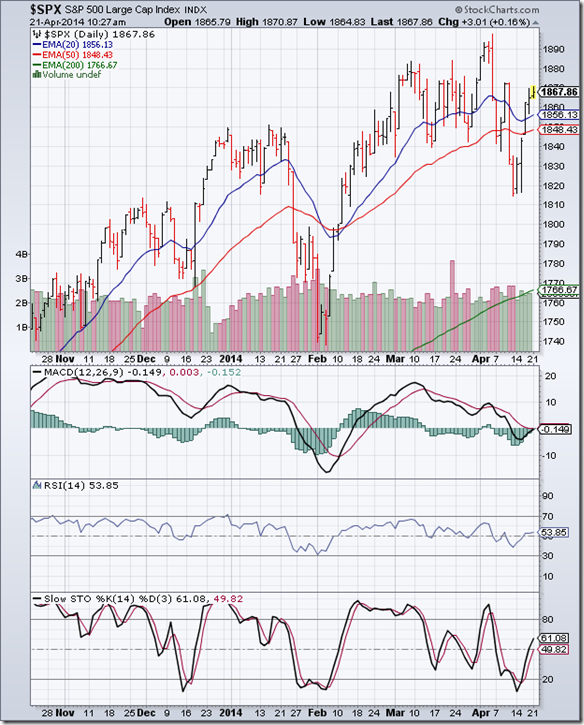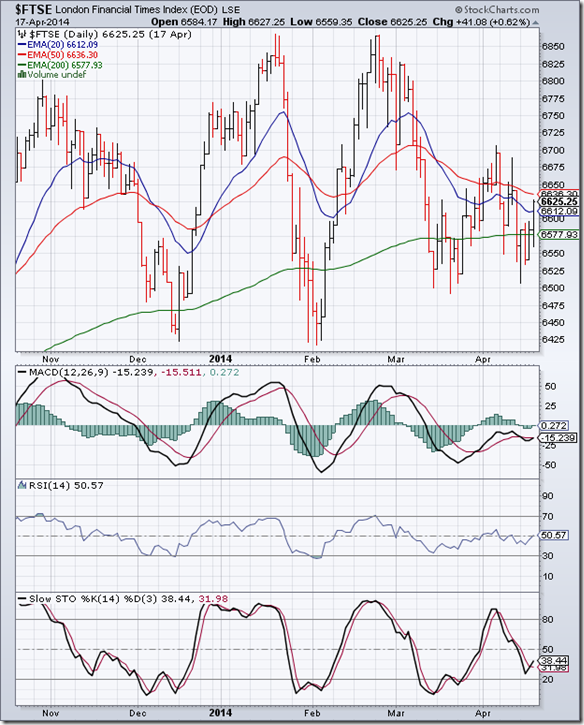S&P 500 Index Chart
The following comments appeared in last week’s analysis of the 6 months daily bar chart pattern of S&P 500: “The index is just above a support zone between 1800-1810. Buying interest may emerge here.”
The index found good support at the 1815 level – just above the support zone mentioned – and climbed above its 20 day and 50 day EMAs in a truncated trading week. The short but sharp correction from the Apr 4 peak of 1897 should enable the index to move to new highs.
Technical indicators are turning bullish. MACD is about to cross above its signal line into positive territory. RSI and Slow stochastic have risen above their respective 50% levels. Bulls are trying to regain control of the chart.
On longer term weekly chart (not shown), the index received support from its rising 20 week EMA and is trading above all three weekly EMAs. However, weekly technical indicators are in down trends. The correction may not be quite over yet.
FTSE 100 Index Chart
The 6 months daily bar chart pattern of FTSE 100 was expected to test the 6500 level once more, which it did by dropping to an intra-day low of 6507 on Apr 14. By the end of a short trading week due to Easter holidays, the index managed to close above its 200 day and 20 day EMAs, but remained below its 50 day EMA.
Daily technical indicators are showing some bullish signs. MACD moved up to touch its signal line in negative territory. RSI has just crept above its 50% level. Slow stochastic is rising towards its 50% level.
Bears aren’t ready to loosen their grip yet, but bulls need not lose heart as long as the 6500 level holds.
On longer term weekly chart (not shown), the index is trading well above its rising 200 week EMA in a long-term bull market. The index may be in the process of forming a large ascending triangle, which has strong bullish implications.
Bottomline? Daily bar chart patterns of S&P 500 and FTSE 100 are recovering from sharp corrections. Both indices are in long-term bull markets. Ignore near term volatility. Stay invested.


No comments:
Post a Comment